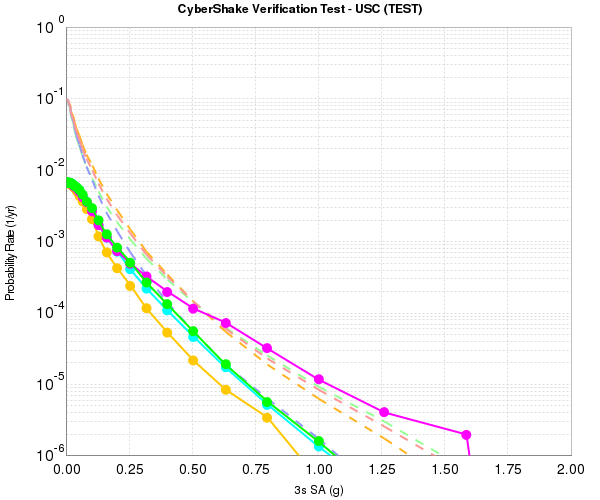Difference between revisions of "High Frequency CyberShake"
From SCECpedia
Jump to navigationJump to search| Line 4: | Line 4: | ||
To move to higher frequencies, the rupture geometries must have a denser grid spacing, from 1000m for 0.5 Hz to 200 m for 1.0 Hz. We adopted genslip v3.3.1 to resolve an issue in which, since the dimensions of the rupture surfaces can vary a bit going from 1000m to 200m, some ruptures went from 8 rupture variations to 2, resulting in undersampling the rupture and causing artificially large ground motions: | To move to higher frequencies, the rupture geometries must have a denser grid spacing, from 1000m for 0.5 Hz to 200 m for 1.0 Hz. We adopted genslip v3.3.1 to resolve an issue in which, since the dimensions of the rupture surfaces can vary a bit going from 1000m to 200m, some ruptures went from 8 rupture variations to 2, resulting in undersampling the rupture and causing artificially large ground motions: | ||
| − | [[File:Comparison of 1000m and 200m runs.png|frame|left|Green = Run_ID 2465: 1000m SGTs, 1000m synth; | + | [[File:Comparison of 1000m and 200m runs.png|frame|left|Green = Run_ID 2465: 1000m SGTs, 1000m synth;\nMagenta = Run_ID 2503: 200m SGTs, 200m synth; |
| − | |||
| − | |||
Orange = Run_ID 2504: 1000m SGTs, 200m synth (interpolation); Cyan = Run_ID 2507: 200m SGTs, 1000m synth (most points ignored)]] | Orange = Run_ID 2504: 1000m SGTs, 200m synth (interpolation); Cyan = Run_ID 2507: 200m SGTs, 1000m synth (most points ignored)]] | ||
Revision as of 21:56, 23 April 2014
genslip v3.3.1
To move to higher frequencies, the rupture geometries must have a denser grid spacing, from 1000m for 0.5 Hz to 200 m for 1.0 Hz. We adopted genslip v3.3.1 to resolve an issue in which, since the dimensions of the rupture surfaces can vary a bit going from 1000m to 200m, some ruptures went from 8 rupture variations to 2, resulting in undersampling the rupture and causing artificially large ground motions:
